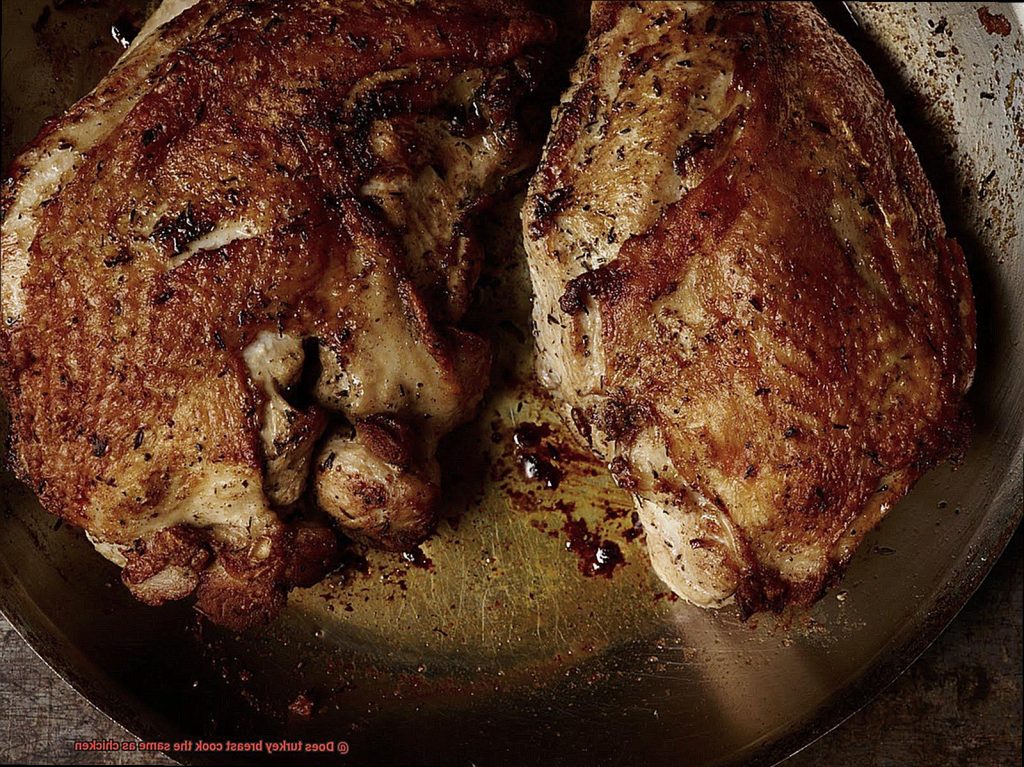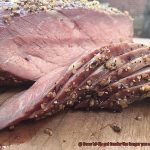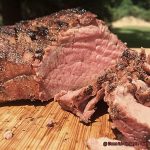As the holiday season approaches, it’s time to start thinking about the centerpiece of your Thanksgiving feast – the turkey. But if you’re used to cooking chicken, you may be wondering if turkey breast cooks the same way. While these two birds share some similarities, there are a few key differences that can make or break your dish.
Let’s start with what they have in common. Both turkey and chicken breasts are lean meats that are packed with protein and low in fat. To keep them moist and tender, marinating or brining is recommended before cooking. And whether you choose to grill, roast, bake or fry them, both meats can be cooked using a variety of methods.
But here’s where things get interesting: when it comes to cooking times and temperatures, turkey and chicken take different paths. Turkey breast is denser than chicken breast and requires longer cooking times at lower temperatures to ensure it’s fully cooked all the way through. Overcooking chicken breast can cause it to dry out and become tough.
So does turkey breast cook like chicken? Not exactly. While there are similarities between the two birds, it’s important to understand their differences before getting started on your holiday meal prep. With this knowledge under your belt, you’ll be able to whip up a perfectly cooked turkey that will have your guests singing your praises. Let’s delve deeper into this topic to learn more about how to cook a delicious turkey breast.
Contents
Cooking Times for Grilling Poultry
Grilling is a beloved pastime, especially during warm summer months. Grilled chicken is a staple of many backyard barbecues, but some may wonder if turkey breast can be grilled just as easily. As an expert on cooking times for grilling poultry, I am here to tell you that while both meats can be grilled, there are some differences in cooking times and techniques to consider.
The size and thickness of the meat are important factors to note when grilling poultry. Turkey breasts are generally larger than chicken breasts, requiring longer cooking times to ensure even cooking without burning the outside before the center reaches a safe temperature. Using a meat thermometer to monitor the internal temperature of the turkey breast is crucial.
For grilling turkey breast, preheat the grill to medium-high heat, around 375-400°F. Place the turkey breast on the grill and cook for approximately 12-15 minutes per side or until the internal temperature reaches 165°F. Butterflying the turkey breast can also help it cook more evenly by reducing its overall thickness.
When it comes to grilling chicken, the cooking time varies depending on the cut of the chicken. For boneless chicken breasts, grill for 6-8 minutes per side until the internal temperature reaches 165°F. For bone-in chicken pieces, grill for 30-35 minutes or until the internal temperature reaches 165°F. The recommended temperature for grilling chicken is slightly higher than that for turkey, around 425-450°F.
Seasoning is another crucial factor to consider when grilling poultry. Marinades or rubs can add flavor and moisture to both turkey and chicken, but due to its leaner nature, turkey may require more seasoning than chicken to enhance its natural flavor.
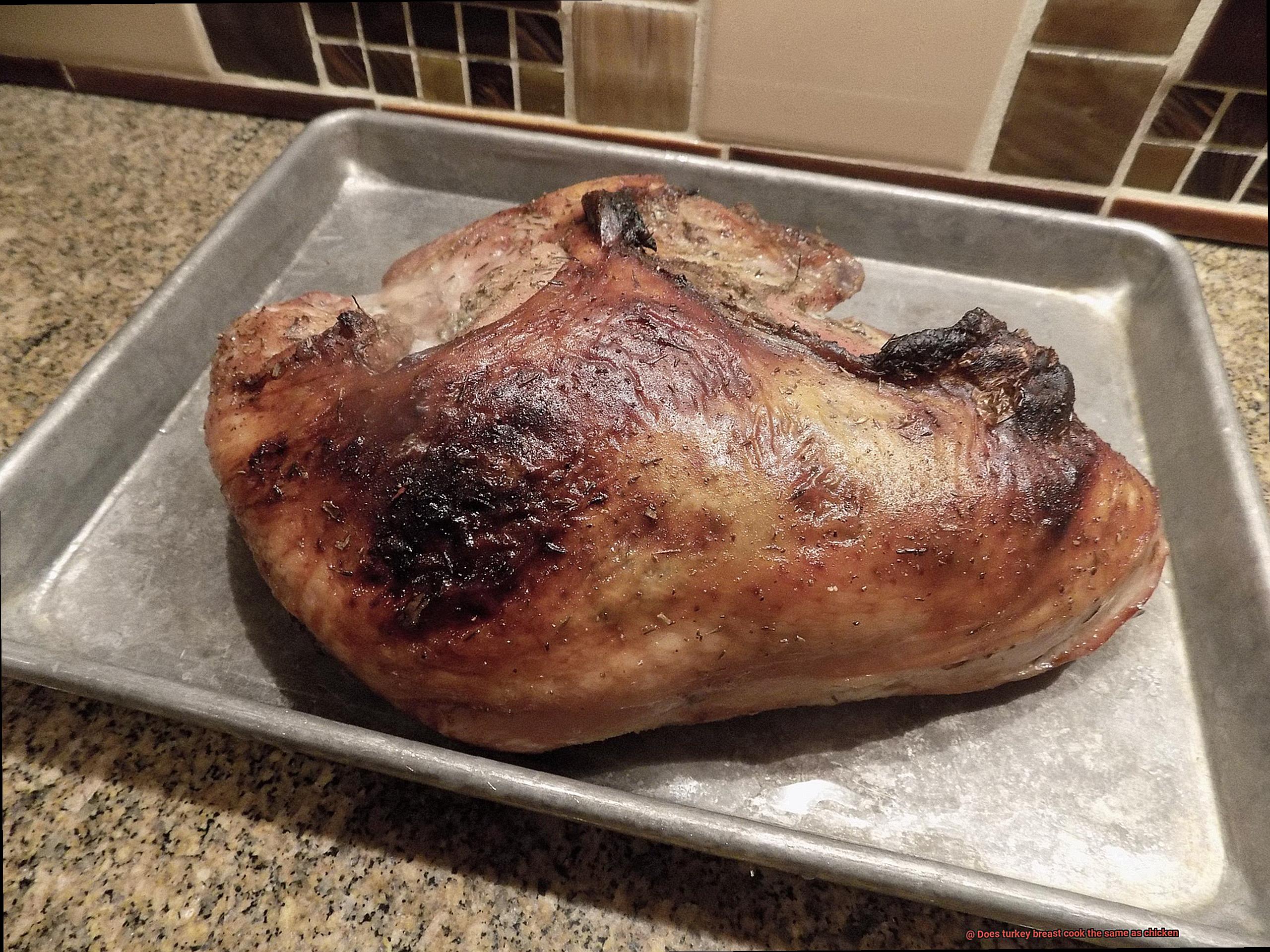
It’s essential to remember that these times are just estimates and may vary depending on the thickness of the poultry and the heat of the grill. Always use a meat thermometer to ensure that the poultry is fully cooked and safe to eat.
The Importance of Monitoring Internal Temperature
Not only does this ensure that your meals are safe to consume, but it also helps prevent any unpleasant cases of foodborne illness.
Let’s start by acknowledging that chicken and turkey are both common carriers of harmful bacteria like salmonella. This fact alone should be enough to encourage us to take extra precautions when cooking these meats. However, relying on visual cues to determine whether or not our meat is fully cooked is simply not enough.
That’s where monitoring internal temperature comes into play. While the recommended internal temperature for fully cooked poultry is 165°F (75°C), it’s important to keep in mind that cooking times may differ depending on the size and thickness of the meat. Using a meat thermometer is the most accurate way to ensure that your poultry has reached a safe temperature.
When measuring the internal temperature, it’s crucial to insert the thermometer into the thickest part of the meat without touching any bones. This will provide you with an accurate reading of the internal temperature, allowing you to make informed decisions about whether or not your chicken or turkey is fully cooked.
Now, I understand that using a meat thermometer may seem like an extra step in an already lengthy cooking process. But trust me when I say that it’s worth it. Undercooked poultry can lead to food poisoning with symptoms ranging from mild nausea and vomiting to severe diarrhea and hospitalization. By taking the time to monitor internal temperature, you can avoid all these unpleasant outcomes.
To summarize, monitoring internal temperature when cooking poultry is essential for food safety. Don’t rely on visual cues alone- invest in a quality meat thermometer and ensure that your chicken or turkey has reached at least 165°F (75°C) before consuming. To make this process easier for you, here’s a quick checklist:
- Use a meat thermometer to monitor internal temperature
- Insert the thermometer into the thickest part of the meat without touching any bones
- Aim for an internal temperature of at least 165°F (75°C)
- Enjoy a safe and delicious meal with your loved ones.
Butterfly Technique for Even Cooking
Look no further than the butterfly technique, also known as spatchcocking.
But what exactly is the butterfly technique, and how does it work? Essentially, it involves removing the backbone and flattening the bird, which reduces the thickness of the meat and promotes even cooking throughout. This technique can be used on both chicken and turkey breast, making it a versatile option for any poultry dish.
To butterfly your bird, you’ll need a pair of kitchen shears to cut down both sides of the backbone and remove it completely. Next, flip the bird over and press down firmly on the breastbone until you hear a satisfying crack. This will flatten the bird out and make it easier to cook.
Once your bird is butterflied, it’s time to get creative with seasoning. Use your favorite herbs and spices to add flavor to your dish. Then, grill on high heat until the meat is cooked through. Because the meat is thinner than a whole bird, it will cook more quickly – so keep an eye on it to avoid overcooking.
The butterfly technique is not only effective in ensuring even cooking, but it’s also a visually impressive way to present your dish. Imagine serving up a beautifully cooked, perfectly seasoned chicken or turkey breast – your guests won’t be able to resist.
Benefits of Marinating/Rubbing Turkey Breast
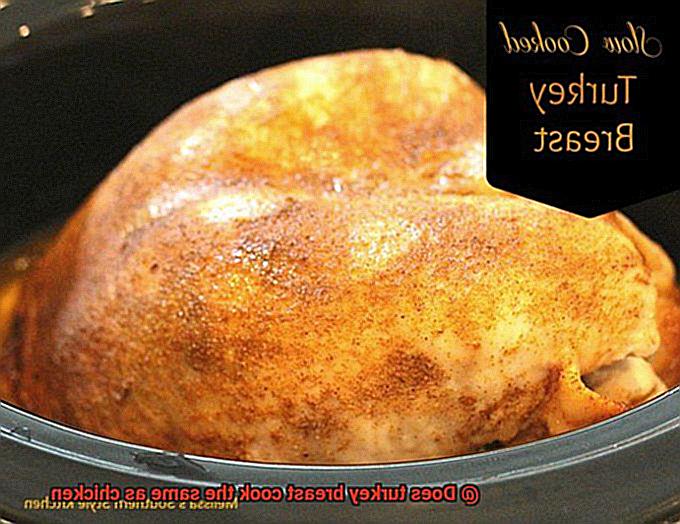
Look no further than marinating or rubbing. This simple technique infuses your poultry with delicious flavors, while also tenderizing the meat and reducing harmful compounds formed during cooking.
Marinating involves soaking the turkey breast in a mixture of herbs, spices, and liquids, while rubbing involves coating the surface of the meat with a dry blend of seasonings. Either way, you’re adding layers of flavor that complement the natural taste of turkey.
But what sets marinating and rubbing apart from other cooking methods is their ability to tenderize the meat. The acidic ingredients in the marinade or rub break down the proteins in the turkey breast, resulting in a juicier and more succulent end product. This is especially important when cooking turkey breast, which can easily become dry and tough if overcooked.
Additionally, marinating or rubbing can reduce the formation of harmful compounds when cooking at high temperatures. By adding antioxidant-rich ingredients like garlic, ginger, or rosemary to your marinade or rub, you can help minimize the formation of carcinogenic compounds that can occur during cooking.
Ready to give marinating or rubbing a try? The options are endless when it comes to flavor combinations. Here are some ideas to get you started:
- Asian-inspired: soy sauce, ginger, garlic, sesame oil
- Mediterranean: lemon juice, oregano, thyme, olive oil
- Spicy: chili powder, cumin, paprika, cayenne pepper
- Sweet and savory: maple syrup, Dijon mustard, thyme
Tips for Perfectly Cooked Turkey Breast on the Grill
Grilling turkey breast is a delicious and healthy way to enjoy this protein. However, it’s important to keep in mind that turkey breast cooks differently than chicken, so it requires specific techniques to ensure that it is tender, juicy, and flavorful. Here are some tips to help you achieve the perfect grilled turkey breast.
Use a Meat Thermometer
Turkey breast is leaner than chicken, which means it can dry out more easily if overcooked. To avoid this, use a meat thermometer to ensure that the internal temperature of the turkey reaches 165°F (74°C). Insert the thermometer into the thickest part of the meat, away from any bones. This will help you to achieve perfectly cooked turkey breast without overcooking or undercooking it.
Brine the Turkey Breast
Brining involves soaking the meat in a saltwater solution, which helps to keep it moist and tender. You can also add other seasonings or aromatics to the brine for extra flavor. Just be sure to rinse off the brine before grilling to avoid overly salty meat. Brining is especially helpful for lean meats like turkey breast, as it adds moisture and enhances the flavor.
Use Indirect Heat
Set up your grill so that there is a hot side and a cooler side, and place the turkey breast on the cooler side. This allows the turkey to cook through without getting too charred on the outside. It’s important to note that turkey breast is denser than chicken breast, so it requires lower heat and longer cooking time to prevent burning on the outside while remaining raw on the inside.
Let it Rest
After grilling, let the turkey breast rest for about 10-15 minutes before slicing into it. This allows the juices to redistribute throughout the meat, resulting in a more flavorful and tender final product. Tent some foil over the meat while it rests to keep it warm.
Seasoning
Before grilling, season the turkey breast with your desired spices and herbs. Due to its leaner nature, turkey may require more seasoning than chicken to enhance its natural flavor. You can use a dry rub or a marinade to add flavor to the meat. Some popular seasonings for grilled turkey breast include garlic, paprika, rosemary, and thyme.
How to Avoid Overcooking or Burning Turkey Breast
Cooking the perfect turkey breast on the grill can be challenging, but with a few simple tips, you can avoid overcooking or burning it and serve up a delicious meal. Here are five sub-sections to help you achieve the best results:
Use a Meat Thermometer
One of the most effective ways to prevent overcooking or burning is by using a meat thermometer. Insert it into the thickest part of the turkey breast, making sure not to touch the bone. Cook the turkey until the internal temperature reaches 165°F (74°C). This will ensure that the turkey is fully cooked and safe to eat without being overdone.
Brine Before Cooking
Brining your turkey breast before cooking is another great way to avoid overcooking. Soak the meat in a saltwater solution for several hours to infuse moisture into the meat, making it less likely to dry out during cooking. Rinse off the brine before cooking and adjust your seasoning accordingly.
Monitor Heat While Cooking
High heat can quickly sear the outside of the turkey while leaving the inside undercooked. To prevent this, start cooking at a higher heat to sear and brown the outside, then reduce the heat and continue cooking at a lower temperature until done. This will ensure that your turkey is evenly cooked throughout.
Let It Rest After Cooking
After removing your turkey breast from the grill, let it rest for a few minutes before slicing into it. This allows time for the juices to redistribute throughout the meat, resulting in a more tender and flavorful meal. Covering your turkey with foil during this time can also help keep it warm and prevent it from drying out.
Marinate Before Grilling
Marinating your turkey breast before grilling is a great way to add flavor and prevent it from becoming too dry. Consider using acidic ingredients such as vinegar, lemon juice, or yogurt, which can break down the proteins in the meat and make it more tender. Marinate your turkey breast for at least a few hours before grilling to get the best results.
Best Practices for Grilling Poultry Breasts
Grilling poultry breasts can be a delicate art, but with the right techniques and best practices, you can achieve juicy and delicious results every time. Turkey and chicken breasts require different grilling methods due to their thickness, density, and fat content. Here are some expert tips to help you grill the perfect poultry breasts.
Start by choosing high-quality meat that is fresh, organic, and free from hormones and antibiotics. This will make a huge difference in the final taste and texture of your grilled poultry. Next, marinate your poultry for at least a few hours or overnight to infuse it with flavor and keep it moist during cooking. You can choose from a variety of marinades like lemon and herb, spicy barbecue, or tangy teriyaki.
When grilling turkey breasts, remember that they are thicker and denser than chicken breasts. Thus, you should aim for a grill temperature of around 350°F to 375°F and cook on indirect heat for around 20 minutes per pound or until the internal temperature reaches 165°F. On the other hand, chicken breasts require a grill temperature of around 375°F to 400°F on direct heat for around 6-8 minutes per side or until the internal temperature reaches 165°F.
To avoid dry and tasteless poultry, let your grilled meat rest for a few minutes before slicing into it. This allows the juices to redistribute throughout the meat, ensuring that it stays moist and flavorful.
In summary, here are the best practices for grilling poultry breasts:
- Choose high-quality meat.
- Marinate before grilling.
- Monitor grill temperature and cooking time.
- Let the meat rest before slicing.
The Difference Between Grilled Chicken and Grilled Turkey
Grilling is a beloved culinary art that can elevate the flavor and nutrition of poultry. Both grilled chicken and grilled turkey are popular choices for those looking to prepare a healthy and tasty meal. However, despite their similarities, there are some key differences between these two meats that are important to understand.
Firstly, turkey breast is generally larger and thicker than chicken breast. This means that cooking times will vary between the two, and it’s essential to ensure that the meat is fully cooked to avoid the risk of foodborne illness. Using a meat thermometer is recommended to guarantee that the internal temperature of the turkey reaches 165°F.
In addition to cooking times, there are also differences in texture and flavor between grilled chicken and grilled turkey. Turkey breast tends to be leaner and drier than chicken, which can make it more challenging to grill without drying it out. To overcome this, many people choose to brine their turkey before grilling. Brining involves soaking the meat in a saltwater solution, which helps to retain moisture and enhance flavor.
When it comes to seasoning, both chicken and turkey can benefit from marinades or rubs. However, because turkey breast has a milder flavor than chicken, it can be a good idea to use stronger spices or herbs to enhance the taste. Some popular options include garlic, rosemary, thyme, or smoked paprika.
Finally, it’s worth noting that there are some nutritional differences between grilled chicken and grilled turkey. Turkey breast is lower in calories and fat than chicken breast, making it an excellent choice for those looking to lose weight or maintain a healthy diet.
yPCGiPqph1I” >
Conclusion
In conclusion, while turkey and chicken breasts may seem interchangeable, they require distinct cooking techniques to ensure a mouthwatering meal. Turkey breast, with its denser texture, necessitates lengthier cooking times at lower temperatures to guarantee thorough cooking without drying out the meat. On the other hand, overcooking chicken breast can cause it to lose its tenderness and become unpalatable.
When grilling poultry, size matters. As turkey breasts are typically larger than chicken breasts, they need more time on the grill to cook evenly without burning the outside before the inside reaches a safe temperature. To prevent any mishaps in the kitchen, using a meat thermometer is essential for checking internal temperature and ensuring that your meals are safe to consume.
Seasoning is also key when preparing poultry for grilling. Marinating or rubbing can add flavor and moisture to both turkey and chicken; however, due to its leaner composition, turkey may require more seasoning than chicken to enhance its natural taste.
By following expert tips such as using a meat thermometer, brining before cooking, monitoring heat while cooking, letting it rest after cooking, marinating before grilling, choosing high-quality meat, and allowing your grilled meat to rest for a few minutes before slicing into it – you can achieve juicy and delicious results every time you grill poultry. Understanding the nuances between grilled chicken and grilled turkey will help you choose the right technique for your desired dish.

